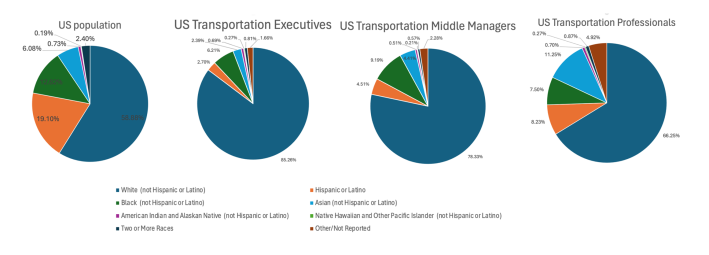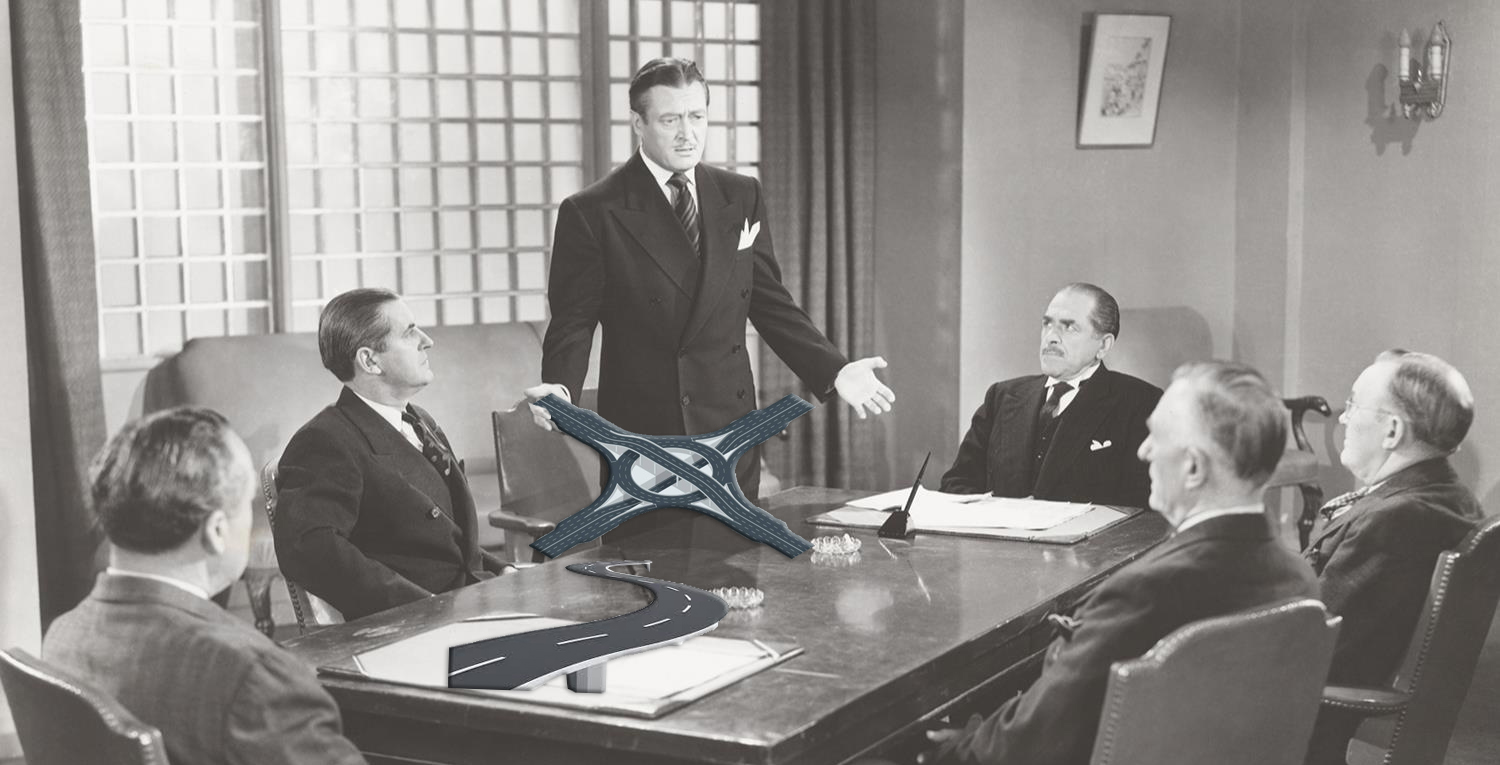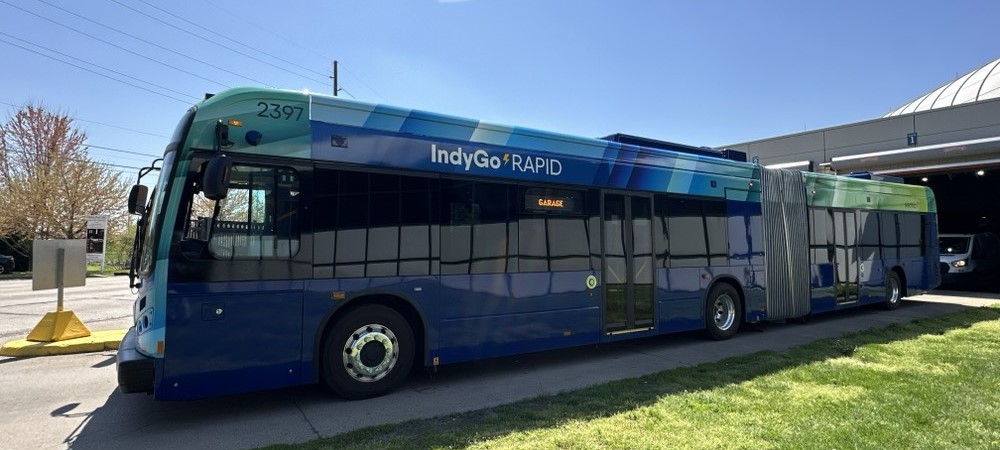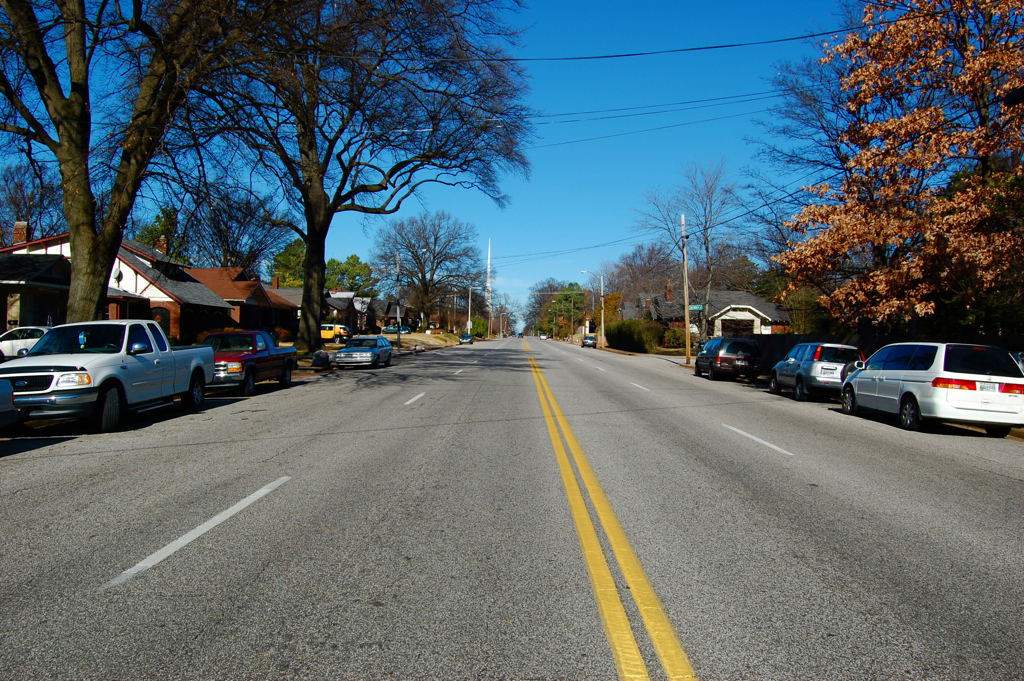The highest-ranking leaders at America's state transportation and highway departments are vastly more likely to be white and male than their constituents — and the needs of the marginalized will be under-represented until leadership is more representative, advocates say.
According to the latest HR data from the American Association of State Highway and Transportation Officials, the highest-ranking executives responsible for many of America's roadways were 70.9 percent male and 85.3 percent white, excluding those who identified as Hispanic or Latino. The U.S. population, by contrast, was 49.6 percent male and 58.8 percent non-Hispanic white in the year the survey was conducted, according to the census.
The transportation workforce got more diverse at the lower rungs of the organizational ladder, but not by much. Mid-level managers — which "includes positions who implement the plans and strategies of the senior/executive level and oversee operations at a regional and/or divisional level," according to AASHTO — were 70.1 percent male and 78.3 percent white, while "professionals," a category which includes engineers, surveyors, and others with professional degrees, were 65.9 percent male and 66.2 percent white.
Two states — Wyoming and Nebraska — had no female executives, while all but seven states had more than 50 percent male executives. And in 11 states, including Georgia, Oklahoma, and Pennsylvania, 100 percent of executives identified as white.

Of course, the overrepresentation of white, cisgender men in the transportation field isn't exactly a new phenomenon, even if specific data on those demographics aren't often scrutinized. Bloomberg Government reporter Lilliana Byington pointed out in 2021 that workers at the federal Department of Transportation were similarly split — 74 percent were male and 70 percent were white — and that "those majorities have remained largely unchanged since at least 2000 — the earliest publicly available data — spanning five presidencies and seven confirmed secretaries."
It's also troubling, though, that state DOT heads don't look like the users of the roads they build, considering the outsized role they play in shaping our transportation network. Because federal road funding largely flows through their offices, state-level decision makers have a massive influence over, for instance, which neighborhoods are targeted for demolition to make way for highway projects and which are left untouched — and needless to say, Black, brown, and low-income communities have historically (and presently) been the ones that get bulldozed the most.
And while "highway" agencies are only responsible for maintaining 19.6 of the national roadway network, many of those roads are highway-style arterials that run straight through neighborhoods — often to deadly results. Between 2019 and 2021, 52.7 percent of pedestrians and 40.1 percent of cyclists killed in America lost their lives on roads managed by the kind of organizations that count themselves as AASHTO members, a percentage that a recent League of American Bicyclist analysis found has risen steeply.
Meanwhile, studies have shown that these deadly roads are more likely to run through communities of color, which helps explain why vulnerable road users of color are so much more likely to die relative to how much they walk and ride.

Women, meanwhile, are more likely to rely on public transit than men, even as male-dominated state DOTs are far more likely to devote unrestricted federal transportation dollars to auto-centric uses. They're also more likely to make lots of short trips on complicated routes throughout the day, and may not benefit as much from the direct highway routes designed around the two-way rush-hour commute that tend to dominate the average DOT's roadway portfolio.
And that's to say nothing of the universe of reasons why women and nonbinary people experience greater rates of sexual harassment and fear of physical assault in the transportation realm, and how auto-focused planning that siphons resources from sustainable modes and reduces eyes on the street can exacerbate both.
Of course, stats on gender and race alone don't tell the whole story of how well DOT officials are representing the diverse needs of the American traveling public. The AASHTO report, for instance, did not analyze how many of its members have a mobility-limiting disability, how many identify as LGBTQI+, or whether they have ever experienced houselessness, poverty, and the mobility challenges associated with life experiences like these; it also doesn't ask how many of its users rely on sustainable modes, and how many exclusively drive. And to be fair, simply giving marginalized people top jobs doesn't necessarily mean that things will get better for their peers — and allies who do the work to understand and uplift the needs of people who don't share their life experiences can help make our transportation network work better for everyone.
As an absolute bare minimum, though, it's essential to ask why marginalized people so often aren't in the room when state DOTs make decisions to represent their own needs— and what impact their absence is having on all of our communities.






